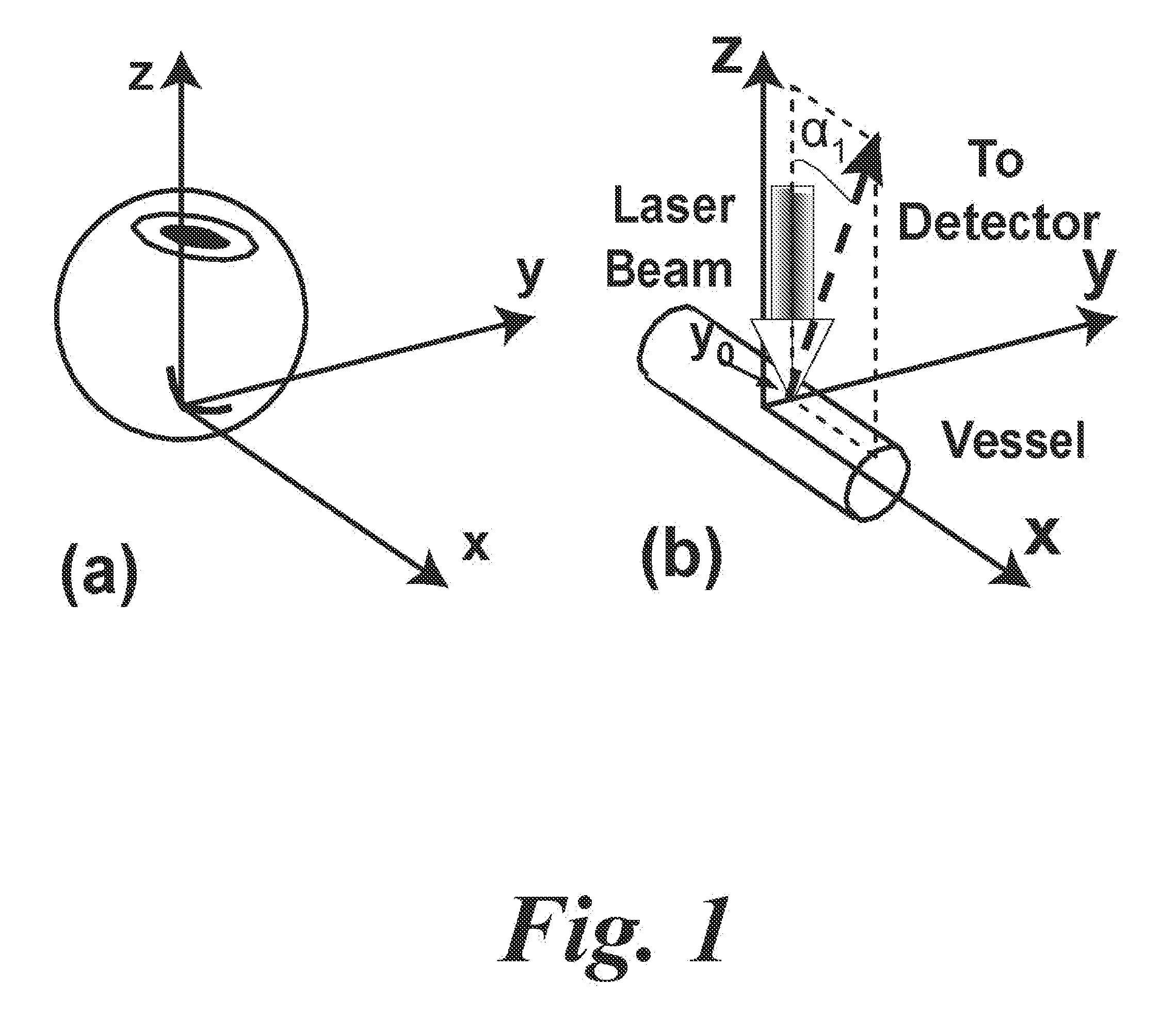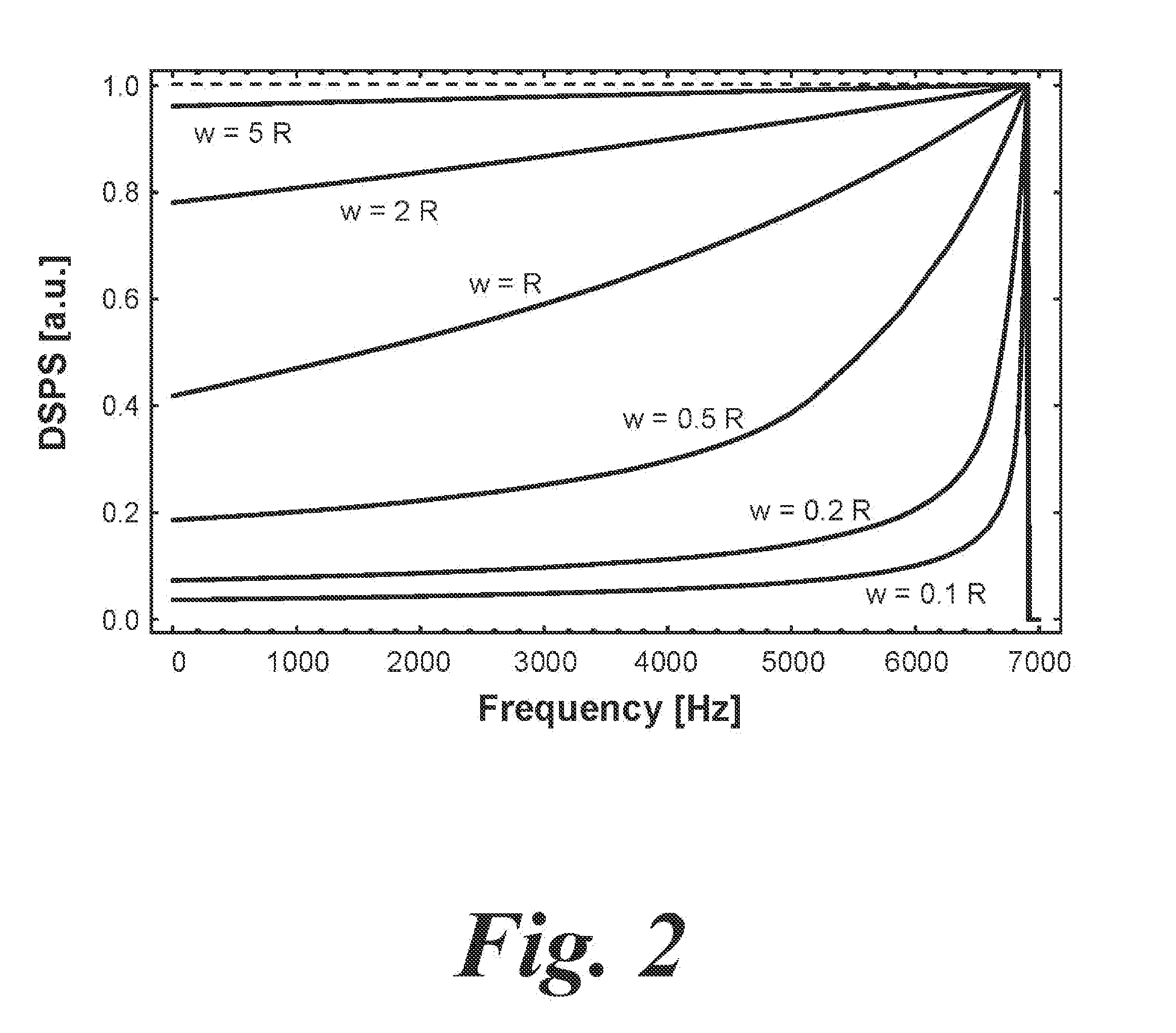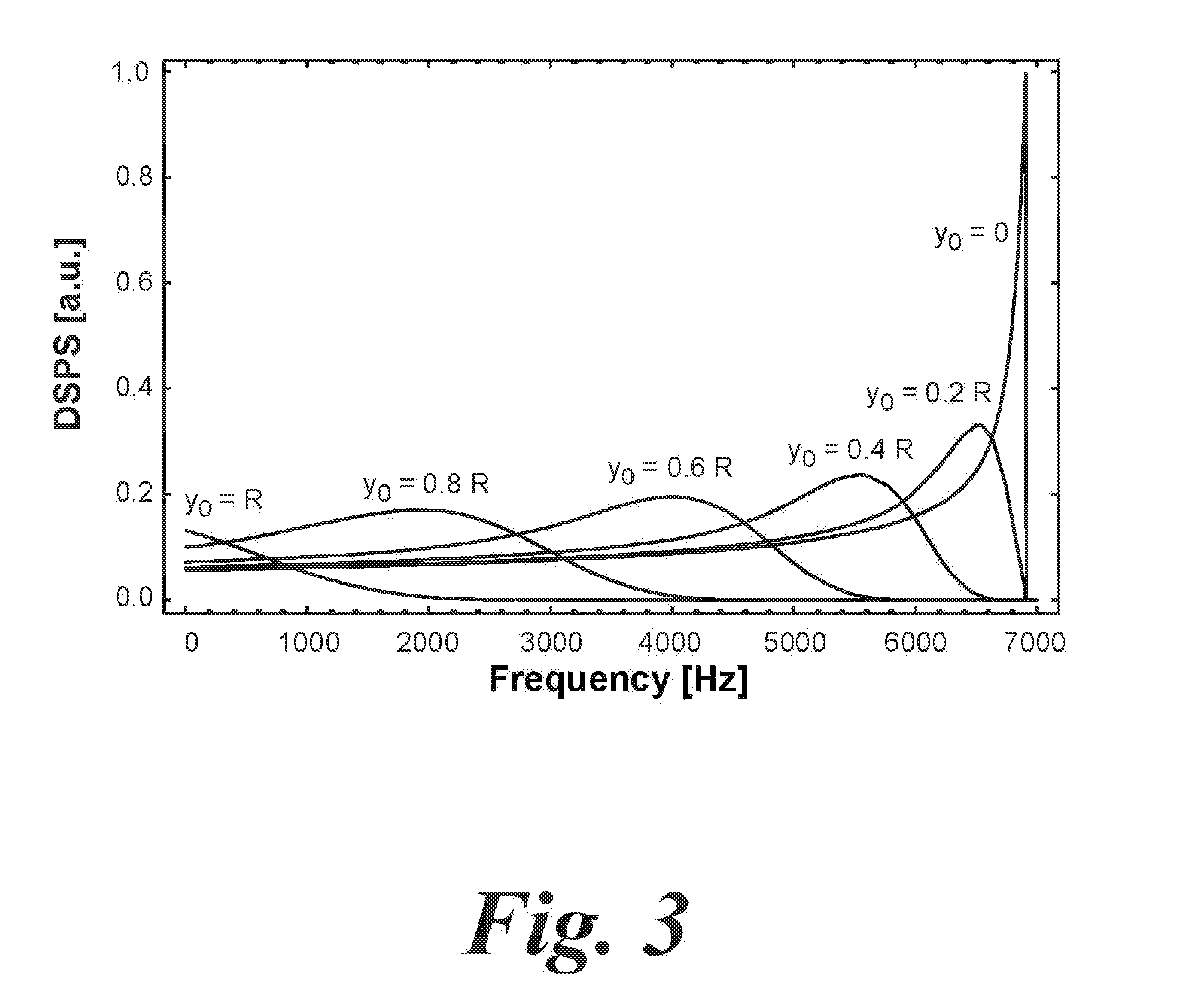Doppler velocimetry of retinal vessels and application to retinal vessel oximetry
a retinal vessel and oximetry technology, applied in the field of oximetry of retinal vessels, can solve the problems of insufficient blood flow, human eye, human body, etc., and achieve the effect of poor oxygen transfer and low oxygenation
- Summary
- Abstract
- Description
- Claims
- Application Information
AI Technical Summary
Benefits of technology
Problems solved by technology
Method used
Image
Examples
Embodiment Construction
[0041]Analysis of Doppler signals detected from red blood cells (RBCs) flowing in retinal vessels by laser Doppler velocimetry (LDV) was traditionally based on the following model. Assuming a parabolic blood velocity profile and uniform illumination of a cylindrical section of the vessel by laser light, one can show that the theoretical shape of the Doppler shift power spectrum (DSPS) is rectangular [1. C. E. Riva, B. Ross, and G. B. Benedek, “Laser Doppler measurements of blood flow in capillary tubes and retinal arteries,” Invest. Opthalmol. 11, 936-944 (1972) and 2. G. T. Feke and C. E. Riva, “Laser Doppler measurements of blood velocity in human retinal vessels,” J. Opt. Soc. Am. 68(4), 526-531 (1978) i.e., the DSPS is constant for all frequencies up to the “cutoff” frequency, fmax, which corresponds to the maximum velocity at the center of the vessel, Vmax.
[0042]This cutoff was determined either by visual inspection of the DSPS using a spectrum analyzer [3. C. E. Riva, G. T. Fe...
PUM
 Login to View More
Login to View More Abstract
Description
Claims
Application Information
 Login to View More
Login to View More - R&D
- Intellectual Property
- Life Sciences
- Materials
- Tech Scout
- Unparalleled Data Quality
- Higher Quality Content
- 60% Fewer Hallucinations
Browse by: Latest US Patents, China's latest patents, Technical Efficacy Thesaurus, Application Domain, Technology Topic, Popular Technical Reports.
© 2025 PatSnap. All rights reserved.Legal|Privacy policy|Modern Slavery Act Transparency Statement|Sitemap|About US| Contact US: help@patsnap.com



